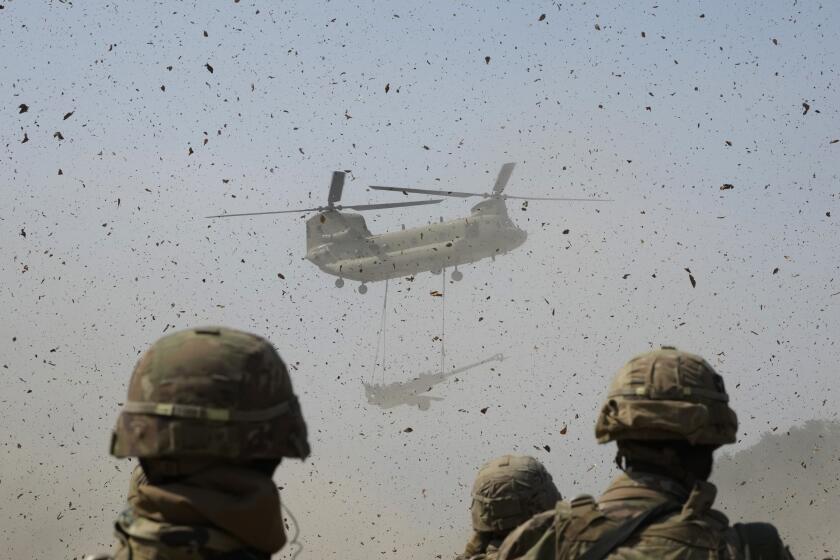Afghan Famine Averted, Most Believe
- Share via
WASHINGTON — A surge of food aid deliveries has averted the threat of widespread famine in Afghanistan this winter, State Department officials said Thursday.
More than 200,000 tons of food has been trucked into the country since September, the officials said. About 75% of that already has reached intended destinations.
Some private aid groups emphasized that the threat of hunger remains in some areas. They also stressed that Afghans now must become agriculturally self-sufficient, lest they become dependent on outside aid that will soon diminish.
Even so, aid officials acknowledged that the flow of food into the country has been a big accomplishment.
While “the victory is not complete yet . . . this was an extraordinary effort,” said Larry Thompson, director of advocacy for Refugees International, a Washington-based humanitarian organization. “It has to be regarded as a huge success.”
When the U.S. bombing campaign began in October, some aid groups were predicting that more than a million people could starve to death and many more could face extreme hunger. Afghanistan has suffered through 22 years of war; large areas have also been punished by several years of drought.
Andrew Natsios, administrator for the U.S. Agency for International Development, said officials had worried that Afghanistan’s 25% mortality rate for children under 5 might double this winter.
The food was shipped into Afghanistan by the World Food Program, a United Nations agency, and was sent from distribution points within the country by a variety of nongovernmental organizations. U.S. officials gave special credit to Afghan aid workers, who were resourceful in finding ways to deliver food and were stepping up deliveries even as the war intensified.
Both U.S. officials and aid groups acknowledged that some of the supplies had been stolen. U.S. military officials were forced to warn commanders of local militias that their fighters should not interfere with distribution of the food.
Yet such instances were not a major obstacle to the program, they said.
Thompson, of Refugees International, said three areas in Afghanistan still have particular problems: the northern region near the border with Uzbekistan and Turkmenistan, where pockets of Taliban resistance remain; isolated mountainous areas of central and eastern Afghanistan; and the south, around Kandahar, where recent fighting has taken place.
About two-thirds of the aid was provided by the United States, which has been the largest supplier of food to Afghanistan for at least the last decade.
The Bush administration has earmarked $320 million for humanitarian assistance to Afghanistan, not including reconstruction aid. The money will go for health programs as well as for food.
Officials said that despite difficult relations with Iran, 65,000 tons of American food have been delivered to Afghanistan through that country.
But shipments from Uzbekistan have been far short of predictions. Natsios said only 5,000 to 6,000 tons of food were shipped from that country.
More than 20,000 radios have been distributed to refugees inside Afghanistan so that they can hear news about humanitarian assistance and security conditions in their areas.
Radio is the most popular form of mass communication in Afghanistan, and U.S. officials said they wanted to be sure that communities could hear announcements by the British Broadcasting Corp., the Voice of America and local commercial stations. About 10,000 more radios are still to be delivered, Natsios said.
More to Read
Sign up for Essential California
The most important California stories and recommendations in your inbox every morning.
You may occasionally receive promotional content from the Los Angeles Times.














